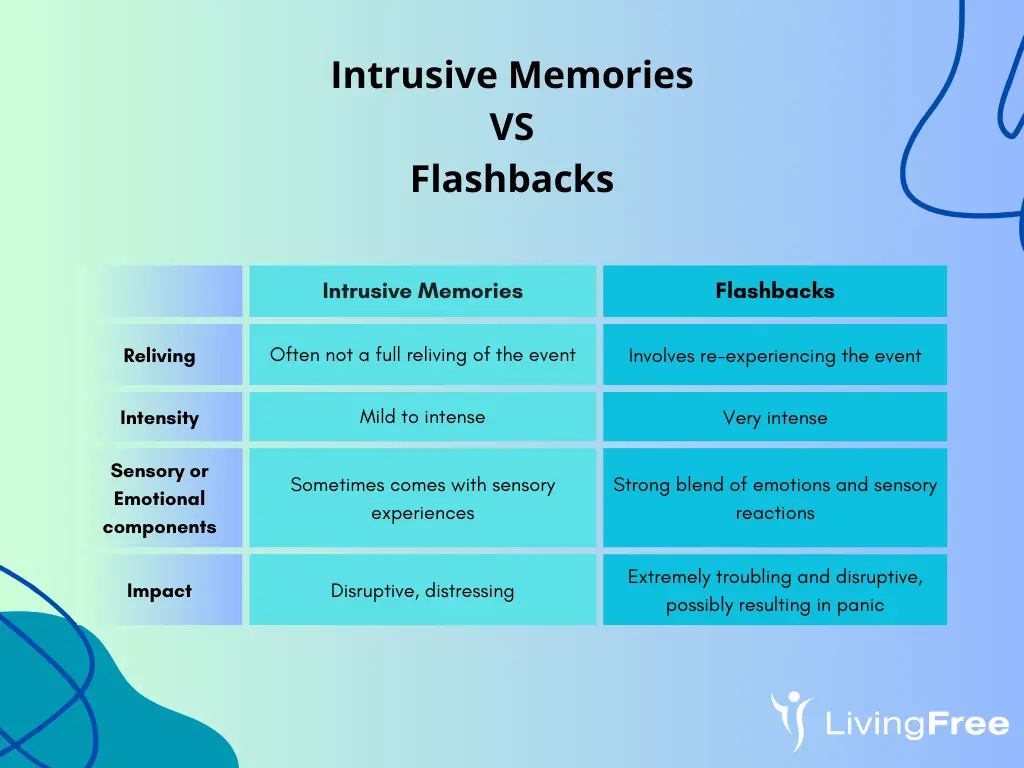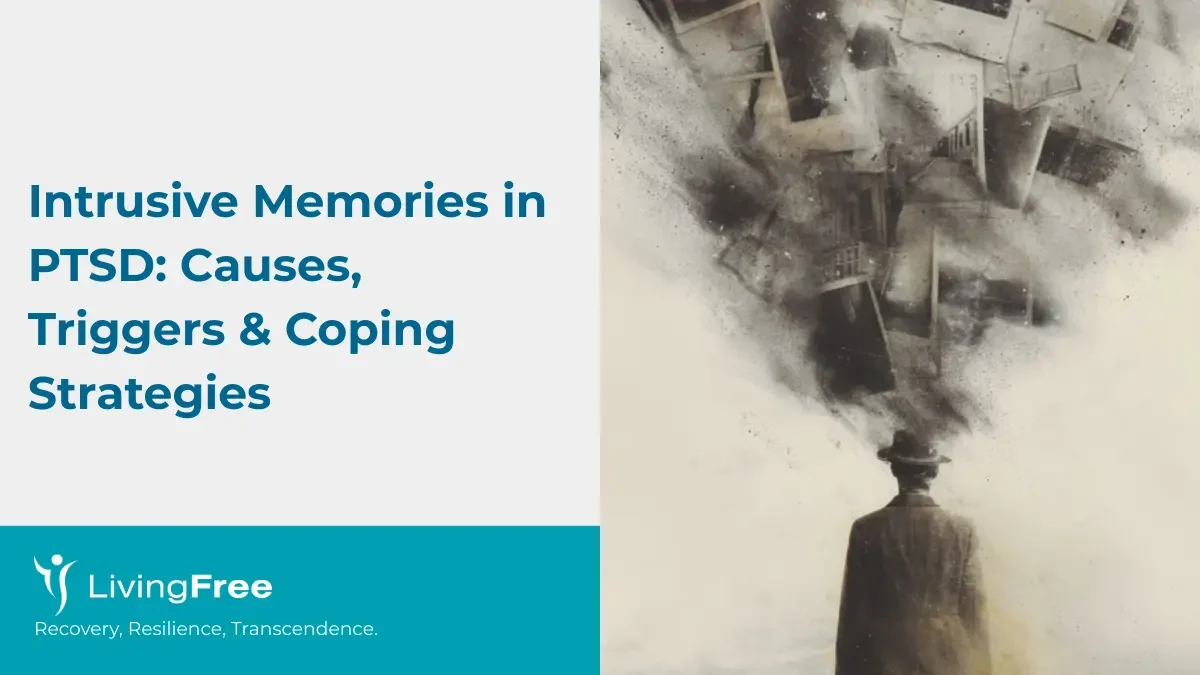Intrusive memories in PTSD are sudden, unwanted thoughts or something beyond flashbacks that bring past trauma rushing back. They can strike without warning. Many people struggle because these memories disrupt sleep, concentration, and emotional balance. But did you know? Trying to block them often makes the cycle worse, increasing distress and hopelessness.
But there is hope. By understanding the causes, recognizing triggers, and learning effective coping strategies, you can begin to manage intrusive memories. And the most important part, understanding these memories is essential for healing, self-compassion, and effective treatment. And this article will bring you to a deep dive into it!
What Are Intrusive Memories?
Intrusive memories are a common sign of PTSD. They’re unwanted and often very intense, showing up suddenly and disrupting daily life. Unlike normal memories that we recall on purpose, these come without warning and can bring strong reactions such as fear, panic, sweating, or a racing heartbeat.
Key characteristics:
- Involuntary: They appear suddenly, without control.
- Sensory: Often visual but may also involve sounds, smells, or physical sensations.
- Repetitive: These memories can recur frequently and unpredictably.
- Distressing: They can trigger strong emotions and make it harder to function day to day.
The Science Behind Intrusive Memories
Intrusive memories are rooted in the brain’s trauma response systems. During traumatic events, the amygdala (responsible for fear) becomes hyperactive, while the hippocampus (which contextualizes memories in time and space) may become dysregulated. This can result in fragmented memory storage, where emotional and sensory fragments of the trauma are encoded in ways that are easily triggered.
Recent neuroimaging studies have shown increased activity in the amygdala and decreased regulation from the prefrontal cortex during intrusive memory recall. This imbalance makes it difficult for individuals to rationalize or suppress these memories once triggered.
Intrusive Memories and Flashbacks are Different
Although related, intrusive memories and flashbacks are not the same. The following is a table of differences.

- Intrusive memories are mental images, sensations, or emotions that disrupt current thoughts but allow a person to remain aware of the present moment.
- Flashbacks are more immersive; they can feel like a total loss of connection with the present, where the person temporarily relives the trauma as if it’s happening now.
Related Post: What Is Complex Trauma and How Is It Different from Other Forms of Trauma?
Common Triggers for Intrusive Memories
Intrusive memories can be set off by both external and internal triggers:
- External triggers: Sights, sounds, smells, or locations reminiscent of the trauma (e.g., screeching tires, the scent of smoke).
- Internal triggers: Emotions, bodily sensations, or thoughts that resemble those experienced during the trauma.
- Sometimes just a simple cue, such as a time of year or certain words, can trigger these memories.
Examples of Intrusive Memories in PTSD
- A combat veteran suddenly hears gunfire in their mind while walking down a quiet street.
- A survivor of a car accident vividly sees shattered glass and hears the impact while sitting in traffic.
- Someone who experienced assault might involuntarily recall the assailant’s face or the feeling of being overpowered.
These memories often involve intense detail and a sense of “nowness” that makes them highly disruptive.
The Emotional and Functional Impact
Intrusive memories can significantly affect daily functioning, such as:
- Emotional distress: Persistent fear, sadness, guilt, or shame.
- Avoidance: Steering clear of places or activities that might trigger the memory.
- Sleep disturbances: Nightmares and disrupted sleep patterns.
- Cognitive interference: Difficulty concentrating, memory lapses, and reduced productivity.
Over time, these effects can contribute to isolation, depression, and substance use as a form of self-medication.
Related Post: The Neurobiology of Trauma
Coping Strategies and Treatment Options
Even though intrusive memories can be difficult, several well-supported techniques can help lower their impact and how often they appearance:
- Psychoeducation
Understanding that intrusive memories are a normal response to trauma can help reduce shame and fear. Education empowers individuals to seek help and practice self-compassion.
- Trauma-Focused Cognitive Behavioral Therapy (TF-CBT)
This therapy helps individuals reframe distorted beliefs, process the trauma narrative, and develop healthier coping strategies.
- Eye Movement Desensitization and Reprocessing (EMDR)
EMDR uses guided eye movements to help reprocess traumatic memories so they become less vivid and distressing over time.
- Imagery Rescripting & Exposure Therapy
These approaches help patients gradually confront trauma-related imagery in a safe, therapeutic setting.
- Mindfulness & Grounding Techniques
Techniques such as deep breathing, body scans, and sensory grounding can help reduce the emotional intensity of intrusive memories.
- Medication
Antidepressants and sleep aids may be prescribed to manage associated symptoms such as anxiety and insomnia.
When to Seek Help
If intrusive memories interfere with your relationships, work, or sense of safety, professional help is strongly recommended. PTSD is a treatable condition, and mental health professionals can guide you through trauma recovery with compassion and expertise.
Related Post: Diagnosis and Treatment of Psychological Trauma
Final Thoughts
Intrusive memories in PTSD can be distressing, but you are not alone. Learning about triggers and coping strategies can help you manage these moments and regain control of your life before it gets worse. Healing takes time, and seeking support is a brave step toward feeling better.
If you or a loved one is struggling, reach out to a mental health professional, support group, or Contact Us here! Help is available, and you deserve care and understanding every step of the way.


